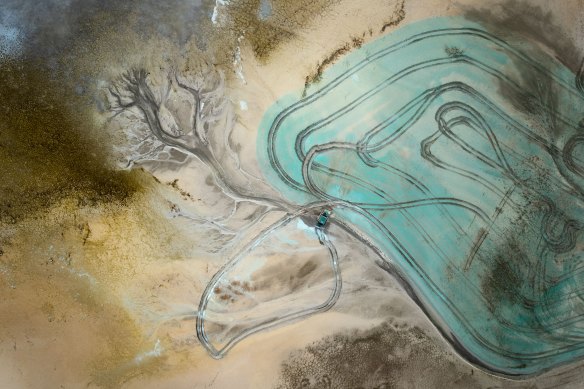- Exclusive
- Environment
- Climate change
- Mining
Mining inquiry to examine pollution impacts on health
By Laura Chung
The mining industry has been put on notice with a parliamentary inquiry to examine whether it is contaminating NSW residents and if regulations should be strengthened in response.
The NSW upper house inquiry will investigate the current and future impacts of gold, silver, lead and zinc mining on human health, as well as the effects on land, water and air quality.

An inquiry into mining impacts on community health and environment has been announced, following concerns from several community groups over nearby mines.Credit: Brook Mitchell
The catalyst for the investigation arose from Central West residents’ concerns that pollution from the Cadia Mine – one of Australia’s largest gold mines, just outside Orange – was affecting their health, as reported by the Herald this month.
Some in the community believe dust from the mine has been allowed to drift across the region and pollute local drinking water. Residents tested their tank water earlier this year and found, of the 68 samples, 15 were 10 times the safe lead level recommended by the Australian drinking water guidelines.
Residents claim that children have broken out in rashes and their nails have become rough, ridged and slightly deformed. As yet, there is no proven link between the mine and these complaints.
A spokesperson for the Cadia Community Sustainability Network, a group that aims to work with the mine to find a way to live and work together, said the group welcomed the inquiry and looked forward to sharing their lived experiences.
An investigation by the NSW Environment Protection Authority (EPA) into the residents’ claims is ongoing, with the mine’s owner, Newcrest, separately addressing the matter. The EPA has previously threatened to suspend the mine’s licence when the agency found “an unacceptable level of dust” coming from the mine.
In an update to investors earlier on Tuesday, Newcrest said a 12-month study conducted by the federal government’s Australian Nuclear Science Technology Organisation had found Cadia was meeting air quality standards for the mine’s surrounding region, and had highlighted that metals including lead, nickel, selenium and chromium did not exceed national standards, occurring at “very low levels”.
A Newcrest spokesperson said in response to the announcement of the parliamentary inquiry that the company welcomed the chance to talk about its operations.
“Mining safely, responsibly and sustainably is what our communities expect of us and what we demand of ourselves. Health and safety isn’t an option for our company, it’s a pre-requisite,” the spokesperson said.
Chair of the inquiry and Greens MP Dr Amanda Cohn said the inquiry would “examine whether there is an appropriate balance between the mining activities undertaken in this state and the health and wellbeing of communities and environmental areas impacted by those activities”.
Greens MP Cate Faehrmann said she expected strong engagement from multiple communities facing the prospect of heavy mining nearby.
“With one gold mine and a silver and lead mine having recently been approved in regional NSW, we must ensure that every measure is taken to protect human health and the environment. If this can’t be guaranteed, then the mines should not progress,” she said.
“Our regulatory framework protects global mining companies more than it does local communities and the environment. This is clearly unacceptable, and I certainly hope that we’ll come up with some recommendations to redress this imbalance.”
Claims from the Cadia community have spooked residents in Lue, about 30 kilometres from Mudgee. In April, the Independent Planning Commission (IPC) approved a new silver, zinc and lead mine. The Bowdens Silver mine owner – Silver Mines Limited – is set to produce about 3.4 million ounces of silver a year, as well as 6900 tonnes of zinc and 5100 tonnes of lead. Nearby McPhillamys Gold Project has also received approval from the IPC.
Lue resident and fifth-generation farmer Tom Combes said the inquiry meant small communities were being heard.
“I am delighted that [we’re] finally getting some reaction. We are fighting huge companies that are raising money through hedge funds. We are [funding] it through cake stores and trivia stores. That’s just not a fair playing field. The government needs to get more involved.”
The inquiry will also examine regulatory framework, rehabilitation and decommissioning practices – an issue that will become increasingly important as mines and other fossil fuel-intensive projects across Australia wind down. In the Hunter Valley alone, about 17 coal mines may close in the next 20 years.
The Herald reported this month that, despite strict regulations, there are many gaps in the mining rehabilitation. Western Sydney University professor Ian Wright, who has worked with residents near Cadia to test their tank water independently, said the inquiry was welcome news.
“The whole country is littered with closed mines that have inadequate rehabilitation,” he said.
The inquiry will provide its findings by November 2023.
The Morning Edition newsletter is our guide to the day’s most important and interesting stories, analysis and insights. Sign up here.